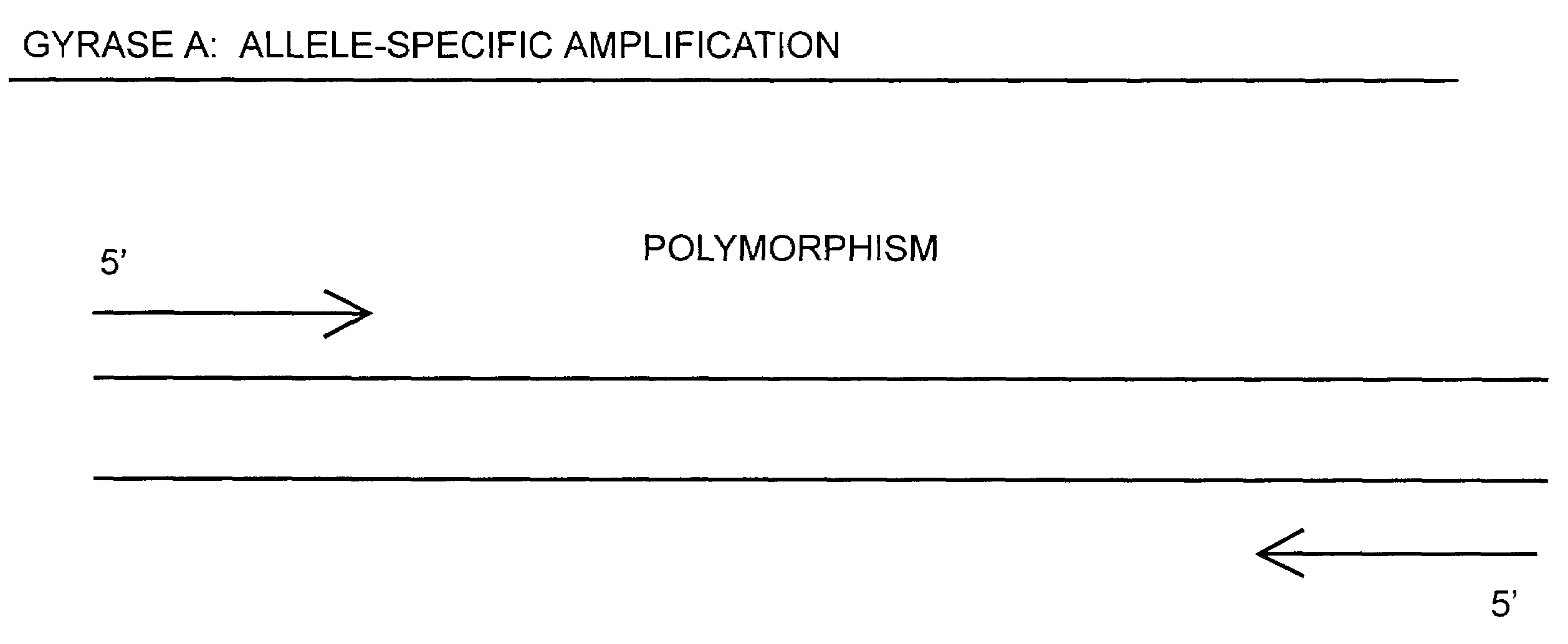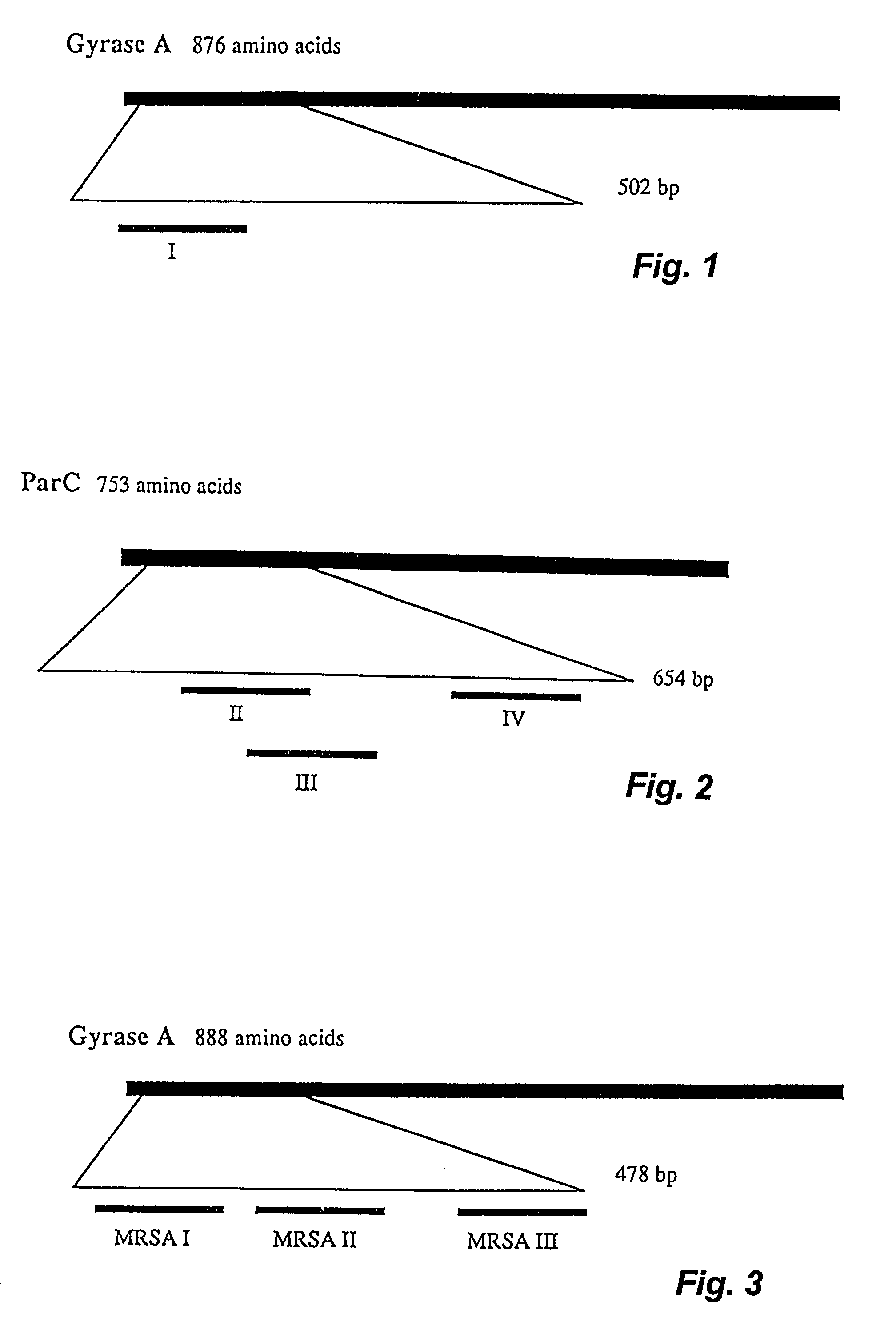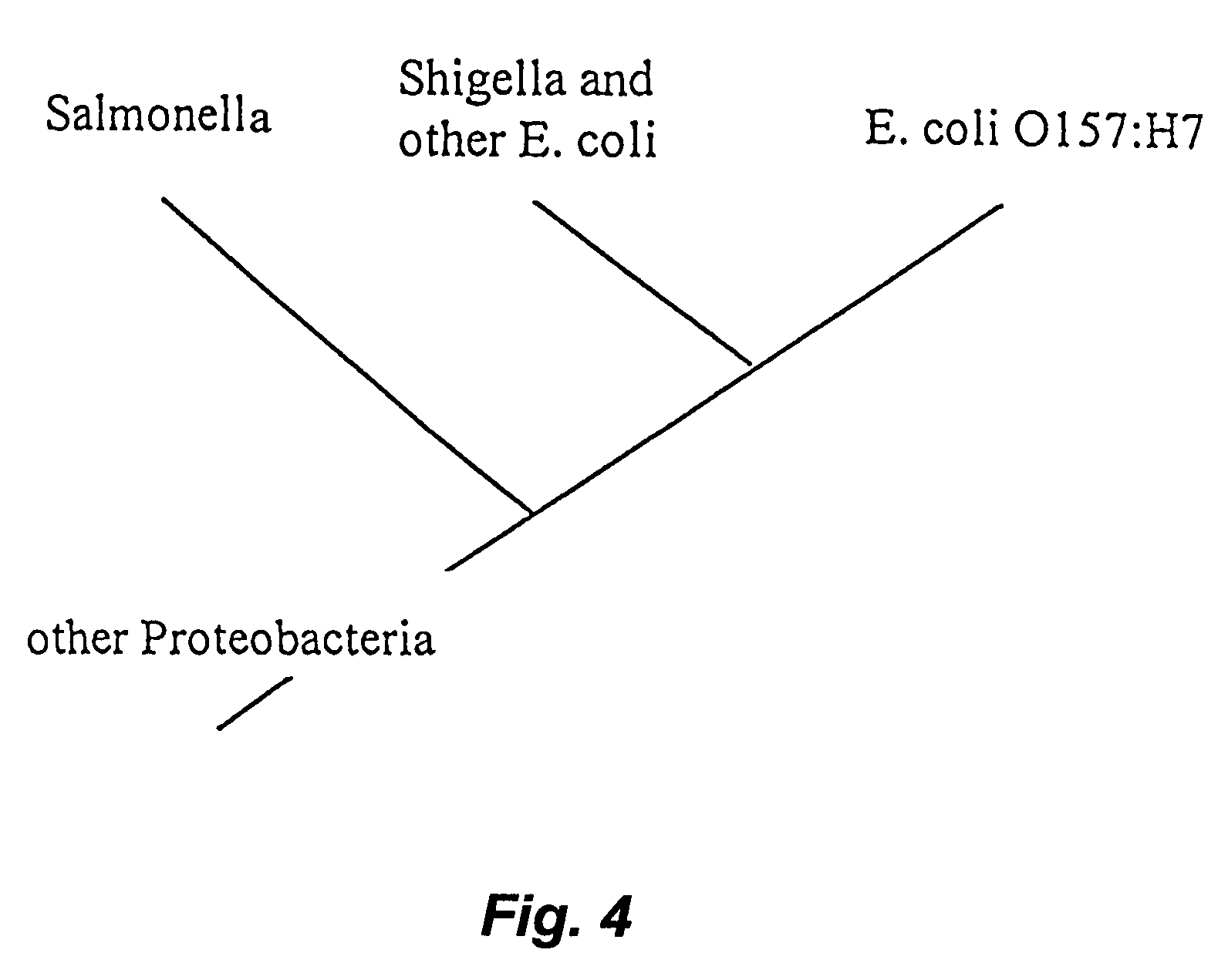Topoisomerase type II gene polymorphisms and their use in identifying drug resistance and pathogenic strains of microorganisms
- Summary
- Abstract
- Description
- Claims
- Application Information
AI Technical Summary
Benefits of technology
Problems solved by technology
Method used
Image
Examples
example i
[0075]In one embodiment, amplification of nucleic acids containing a polymorphism can be carried out. For example, some polymorphisms comprise multiples of point mutations in the topoisomerase genes. As schematically diagramed in FIG. 14, oligonucleotide primers to be used in such an amplification reaction are designed so that at least one primer has at the respective 3′ terminal base a nucleotide that is complementary to a single polymorphism (i.e. mutation) base of one strand of the gene. Designing the primer to have the 3′ base complement a specific polymorphism will allow detection of the polymorphism by the amplification of the sequence bounded by the primers (if complementation occurs), or the detection of the absence of the polymorphism by the non-amplification of the sequence bounded by the primers (if complementation does not occur). The possibility for such detection is due to the well known phenomenon that extension and amplification is unfavored where the 3′ base of the ...
example ii
[0079]Methicillin resistant S. aureus isolates C300 and ATCC 33591 can be detected using oligonucleotid primers Id. Seq. Nos. 17 and 18.
Seq. Id. No. 17 5′GGTGACTCATCTATC3′
Seq. Id. No. 18 5′ATTTTAGTCATACGT3′
Primer 17 has a 3′ base that is the polymorphism at position 3 of codon 86 of GyrA (FIG. 10a) while primer 18 is an oligonucleotide having its 3′ base complementary to the polymorphism at position 3 of codon 127 of GyrA (FIG. 10b).
example iii
[0080]Pathogenic strains of E. coli O157:H7 and 055:K59(B5):H— having polymorphisms in the parC gene may be identified using hybridization techniques and the oligonucleotide sequence Id. No. 19. (FIG. 7)
Seq. Id. No. 19 5′GCGAGTTGGGGCA3′
[0081]Pathogenic strains of Shigella boydii isolate 35964 having polymorphisms in the parC gene may be identified using hybridization techniques and the oligonucleotide sequence Id. No. 20. (FIG. 8)
Seq. Id. No. 20 5′CGACGGTACTTTGC3′
[0082]Pathogenic strains of Shigella flexneri isolate 29903 having polymorphisms in the parC gene may be identified using hybridization techniques and the oligonucleotide sequence Id. No. 21. (FIG. 9)
Seq. Id. No. 21 5′CCGAAAACTACGCTC3′
PUM
| Property | Measurement | Unit |
|---|---|---|
| Electrical resistance | aaaaa | aaaaa |
Abstract
Description
Claims
Application Information
 Login to view more
Login to view more - R&D Engineer
- R&D Manager
- IP Professional
- Industry Leading Data Capabilities
- Powerful AI technology
- Patent DNA Extraction
Browse by: Latest US Patents, China's latest patents, Technical Efficacy Thesaurus, Application Domain, Technology Topic.
© 2024 PatSnap. All rights reserved.Legal|Privacy policy|Modern Slavery Act Transparency Statement|Sitemap



